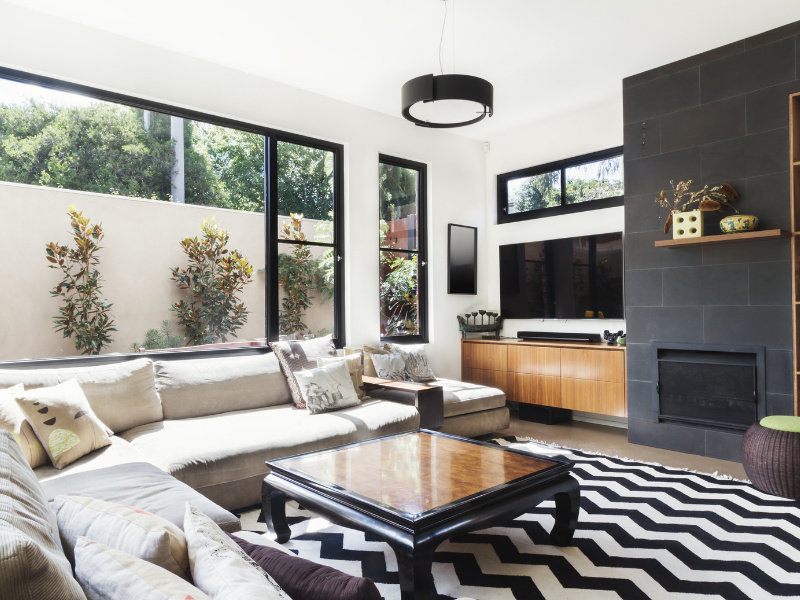Landlord Liability Issues

The idea of being a property owner and generating passive income from rentals can be alluring and when properly managed lucrative. At the same time, there are a number of responsibilities that come with being a landlord and it is important that you are both aware of them and attending to them. Here are some things for you to consider. We have put them into two basic categories for you – Life Safety and Preventative maintenance.
Life-safety- As a property owner it’s both your job and legal responsibility to make sure your tenants are safe in their new home. Here are a few things you must check before they move in and that you want to inspect with some regularity as you can be liable for any and all of them.
· Primary electric – Be sure all electrical systems, circuits, and outlets are in good working order, compliant with building codes, and that your tenant knows where breakers, boxes, and emergency shutoffs are located.
· Handrails- Check all railings and handrails to be sure they are solid, fully functional, and well anchored to the floors, stairs, patios or porches.
· Trip hazards – This may seem obvious but be sure that you don’t have mismatched floor levels, broken concrete or walkways, or anything that could pose a tripping hazard.
· Appliances – Perform a check to be sure all burners are working on the stove, the oven works, the freezer and fridge are in good working order, and if there are fans or AC that all are working properly.
· Security – If you have an alarm system be sure the monitoring is set up and working and that the system itself is in good working order.
· Smoke and carbon monoxide detectors etc. – This is simple. Whenever you get a new tenant, change the batteries in all of the detectors. That way you know that everything will be in good working order.
· Foundation – This is more for your benefit and the point is to inspect the foundation of your property to be sure that the home or structures are not settling and causing cracks in the foundation. This is where water can get in and that is always a big problem.
Regular inspections are a good way to stay on top of these things and all leases provide for the landlord to inspect his/her property on a regular basis.
Preventative maintenance– Here we have two basic categories. Planned and unplanned maintenance. Planned maintenance should include things like:
· Trimming trees and shrubs to be sure they don’t encroach on walkways, sidewalks, obscure windows, of hang over the roof.
· Checking and maintaining any fences.
· Keeping the outside painted or stained
· Maintaining the yard – some landlords prefer to have a rental amount sufficient to cover yard maintenance while others leave it up to their tenants. In that case you need to provide the equipment for them to do so.
Unplanned maintenance – there are a few things you should keep in mind when it comes to handling unexpected maintenance repairs. It’s a good idea to have a separate bank account set aside for when unexpected maintenance pops up. Experts typically suggest having at least three to six months of a property’s expenses in the bank. A great idea is to decide on a fixed amount of the monthly rent you collect to set aside for maintenance.
Another great idea is to keep a log of what, when, and how maintenance work was done on the property so you can be aware of when things might need redoing and how much that will cost. Preventative maintenance work is always less expensive than emergency repairs. This is especially true of plumbing and roofs. Leaking roofs can cause tremendous damage and everyone knows what happens when a pipe leaks, a drain backs up, or a fitting comes loose!
Timing the Rental Market

When you are ready to put your rental on the market, knowing when to start marketing it is crucial to finding great long-term tenants. Poor timing could put you at risk for an extended vacancy and having your listing become ‘stale’, so read on to find best practices to time your rental right for your next tenants.
By pricing a property correctly and understanding both the monthly and yearly rental cycles, you have your best chance to reduce your vacancy and increase profits.
Timing for the Monthly Cycle
Tenants rarely move out until they have somewhere to move-in. Depending on where your investment is, this cycle will shift, but you can expect tenants to be looking for a new place right before they must give notice to their current landlord.
For example:
In the Seattle market, tenants that are leaving a month-to-month rental are required to give notice to their landlord 20 days before the end of the lease term. This is usually around the 10th of a month. This means there is a predictable drop-off of leasing activity each month around the 10th. So- the prime marketing period for May 1st move-in, for instance, will be from March 20th through April 10th.
Activity will quickly die down after the 10th. Landlords should therefore try and have their property listed on the market, in as many places as possible about 6 weeks prior to their desired move-in date, so by around the 15th-20th of May for July 1st. And they should adjust price based on results to find the market by the first week of [June, in this example], ensuring it’s rented by the 10th at the latest.
Timing the Yearly Cycle
The summer months are typically the “hot market” when investors can see an average 10% higher rent prices than what they could expect rents to be if rented in the depths of winter.
We see about 75% of the entire year’s leasing activity transpire in June, July, and August, with September 1st being normally the busiest move-in date of the year. But then the market dramatically slows in the fall.
If you priced too high in May and didn’t get it rented, the market may come up to that price in June. But if you priced too high in September, you might benefit from dropping the price quickly to get ahead of the downward curve that’s coming during the fall months.
Timing the Term End Date
Use the start time as a way to schedule your end date. Set your leases to end in May, June, or July (regardless of whether that means a 6, 9, or, 18-month initial term to get on a summer rental cycle).
This sets you up for future lease negotiations when market conditions are optimal, both with renewing and new tenants.
3 Tips to Effectively Market Your Rental


Image Source: Canva
Most property managers/landlords can attest to how tiring and time consuming the leasing process can be when it’s time to place your rental on the market once again. Fortunately, there are some tried and true methods proven to help things go a little smoother and save you some valuable time! Here are some small tips that can make a world of difference in getting your rental leased quickly and effectively:
-
Always include high quality photos of your rental!
You might be surprised to see the amount of rental properties photos on the internet that have low quality images displayed. Poorly it, blurry or narrow shots of your beautiful home won’t attract even a fraction of the interest that clear, bright and ample listing photos will! Interior and exterior shots are vital as well as wide angle shots of each room in the rental. Have something that makes your unit particularly desirable? Make sure to include it as well as ensure that your main photo represents your rental at it’s very best as this is typically the first photo displayed and captures the viewers interest, which prompts them to explore the listing further!
-
Create a virtual tour video to showcase your property online!
Virtual tours can be an incredible tool that provides a huge benefit to renters who may either have time constrictions, COVID-19 related concerns, or who are relocating to the area. A virtual tour can be easily created by using the video feature on your smart phone or tablet and then uploading to any of the free video sites and including the link in your listings. It’s the second-best thing to being able to tour the property in person and a sure-fire way to stand out against other rental listings on the market.
-
Make sure you include a detailed listing description!
When describing your rental, make sure to list all the pertinent features and then some! Ensure that you included basic information regarding items like parking, appliances that are in the home, laundry, if any utilities are included and any pet restrictions. Many renters will skip over your listing if they do not see what they’re looking for in the listing description, and few will reach out with questions regarding this. Consider also including nearby transit information, as well as nearby activities like parks, restaurants, and shopping.
The Top 10 Desired Amenities in Rentals


Image Source: Canva
Which items regularly top the list of must haves what renters look for year after year when it comes to searching for their new home in the greater Seattle area, and how do the features in your rental stack up? While many new apartment buildings have been marketing unusual amenities lately like pet spas, virtual reality arcades, rooftop yoga studios (and even bowling lanes!) in an effort to stand out from the crowd, a majority of tenants say they are looking for much simpler items in their next rental home to make their stay as comfortable and pleasant as possible.
When it comes down to it, these luxury amenities are just perks, what renters are really looking for tend to be things that upgrade their everyday life. The good news for landlords is that many of these features are affordable upgrades that property owners can provide to help attract excellent long-term tenants and stand out in a sea of other rentals to help get their property leased faster!
- In-Unit Washer & Dryer
Add a washer-dryer to your property for tenants who are looking to stay in their homes instead of using public machines. Tenants love that in-unit laundry means they don’t have to save up quarters, plus, they know who used the machine last – them. They can trust that it’s clean, and available when they need it.
- Assigned Parking or garage parking included
Ensure your tenants have a place to park at your property. Whether that means cleaning out the garage of storage shelves, or helping them with zone parking, your tenants will know they have a spot when they come home. This gives them peace of mind while they’re out and about, and shortens the trip between car and front door after their trip to Costco.
- High-Speed Internet
Access to internet might as well be a utility like electric, gas, and water. If you can’t provide internet services, use the available services as a marketing tool. Be sure to add which providers are available to your property in your marketing.
- Updated Appliances
Updated appliances help tenants know that few things are likely to go wrong and interrupt their daily life. Nothing is worse than a leaking refrigerator, not just for landlords who pay to fix it, but for tenants who lose the convenience of the machine, and have to clean up the mess.
Another reason for updated appliances is aesthetic. When a tenant is proud of their home, they’re likely to stay for a while. Consider matching all your appliances so they look the same, and go with your overall palette. Stainless steel appliances are not only beautiful, but easy to clean. Avoid white appliances, as dirt and stains are easy to spot.
- Outdoor Spaces (rooftop, balcony, community park or yard)
Can you add a patio or yard to your investment property? Tenants are looking for a space outside where they can enjoy nature without having to drive to a hiking trail. Outdoor spaces are also essential for tenants who have pets, especially dogs, who need to be walked daily.
Consider adding a patio to your rental, or finding a spot for a community park. If the yard is private to the home, make sure to include landscape as part of the tenant’s responsibilities. If you’re offering a community space, be sure to add rules of use to your lease as well to make sure the space stays enjoyable for all tenants.
- Dishwasher
A convenience most people are used to by now, the dishwasher is a crucial appliance for renters looking to save time, water, and their hands. Consider adding one even to your smallest unit it you can, as there are plenty of options for dishwashers in all sizes.
- Additional storage space
Adding a closet or shed to your investment property offers your tenants that extra space where they can store their seasonal gear. Tenants who enjoy outdoor activities like camping or snow sports especially look for extra storage space for their gear.
Offering this extra space saves tenants in storage unit rental money, so they’re willing to pay a little extra a month for the square footage, if they can tell that they’d have somewhere to keep their bulkier items.
- Pets allowed
More and more people are adopting pets, especially now during the pandemic, pets allowed is an essential part of owning a rental these days. When allowing pets, be sure to be clear about the rules of the property, and set up a fair pet damage deposit.
- Security and Safety
This amenity is especially important for landlords who rent out multi-family buildings. Be sure to offer your tenants peace when they live at your apartment building by making sure your building is easy for them to access, but hard to strangers to get in.
Install a call box, and make sure they know not to let people in who they don’t know. Make sure you are getting all the keys back from former tenants by creating a move-out system that ensures you have everything.
For those who own single-family homes, or units that have doors to the outside, change the locks between tenants.
- Natural Lighting
Show off the natural light in your marketing photos. Take photos during the day when the light is best in the unit and keep all the blinds and curtains open so renters who are looking for their next place will see that your property has plenty of natural light.
If you don’t have natural light, consider upgrading your current lights to LED bulbs so the place shines bright. Another great way to open the space is to paint your walls with a warm white color.

 Facebook
Facebook
 X
X
 Pinterest
Pinterest
 Copy Link
Copy Link

